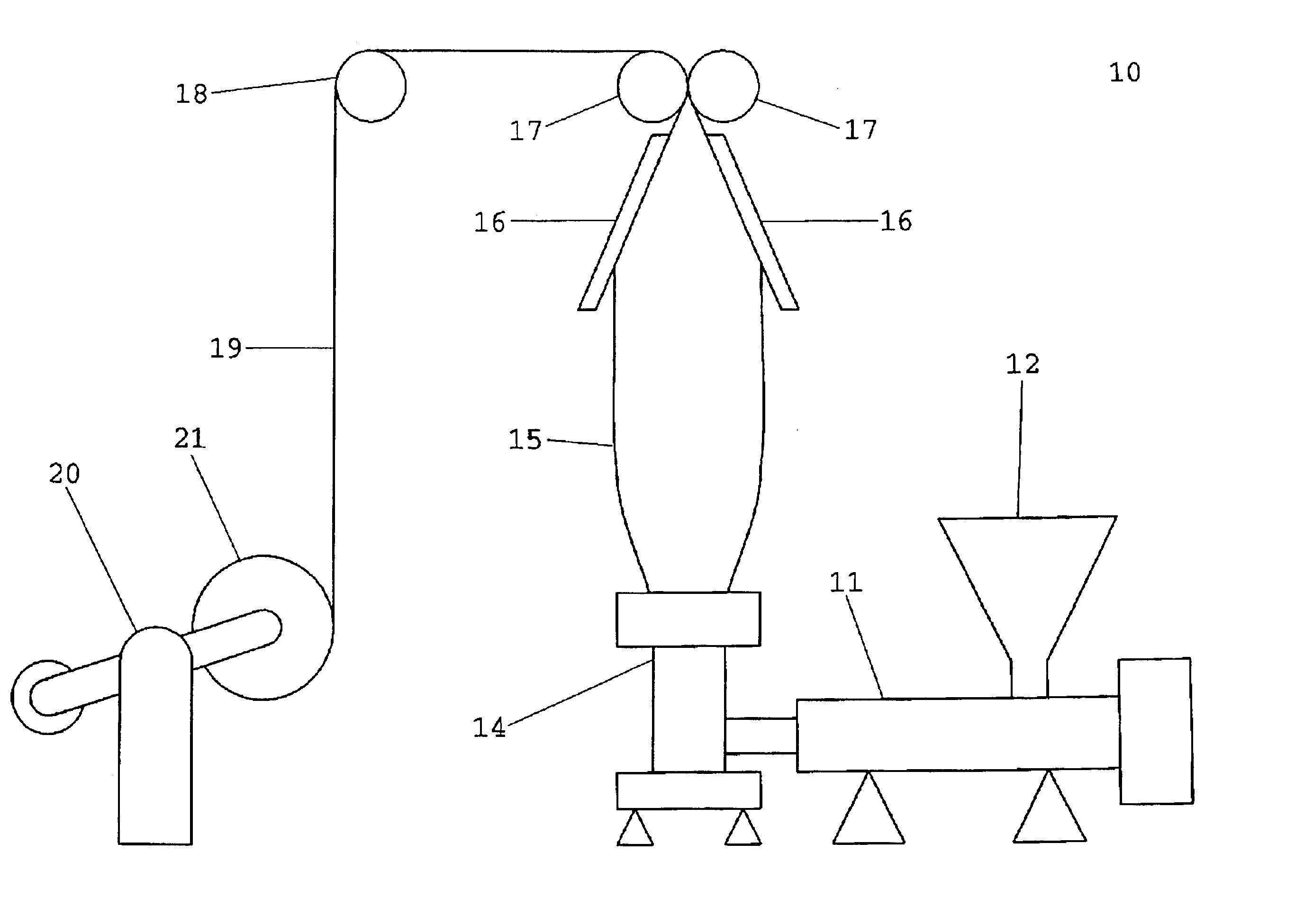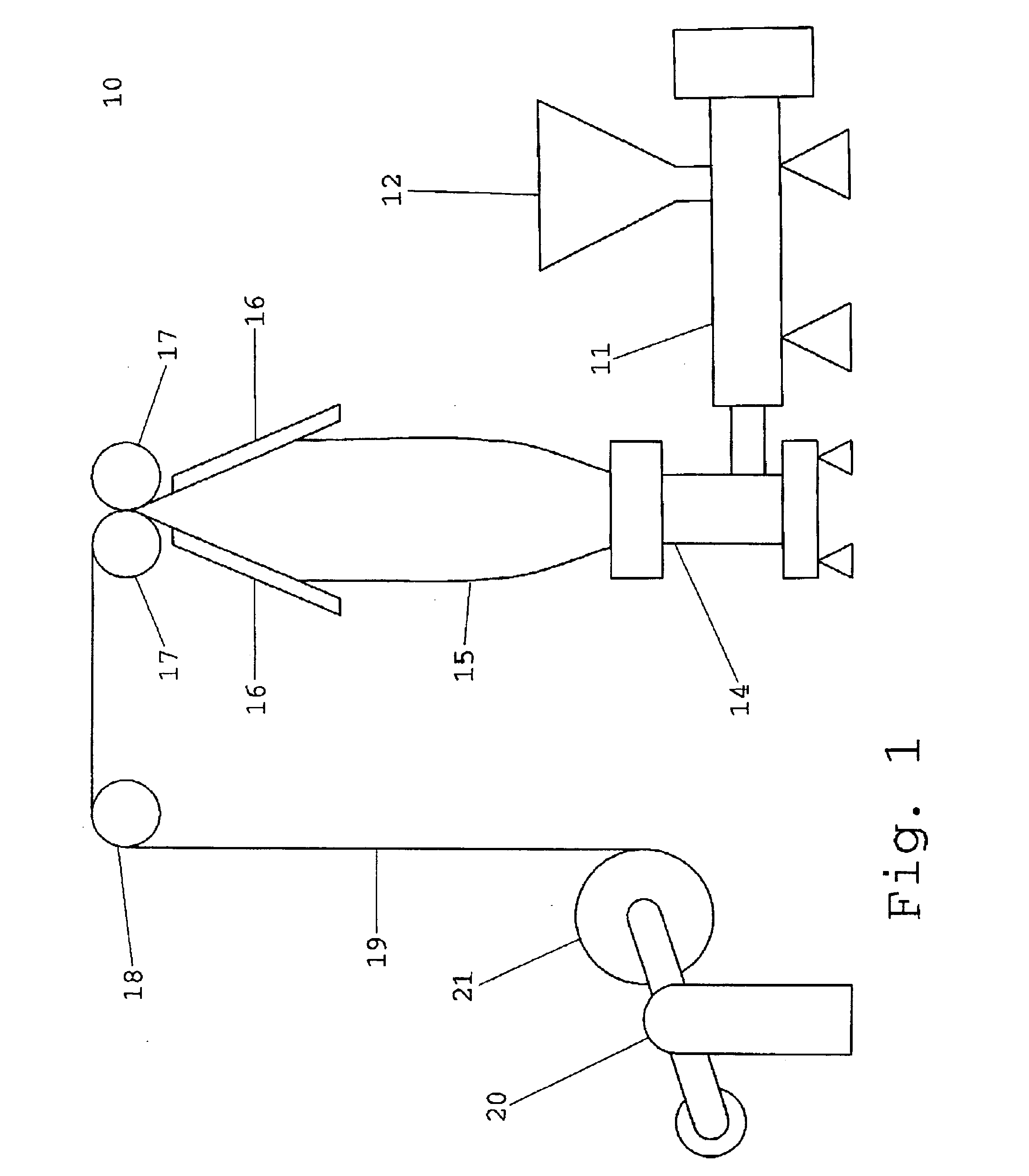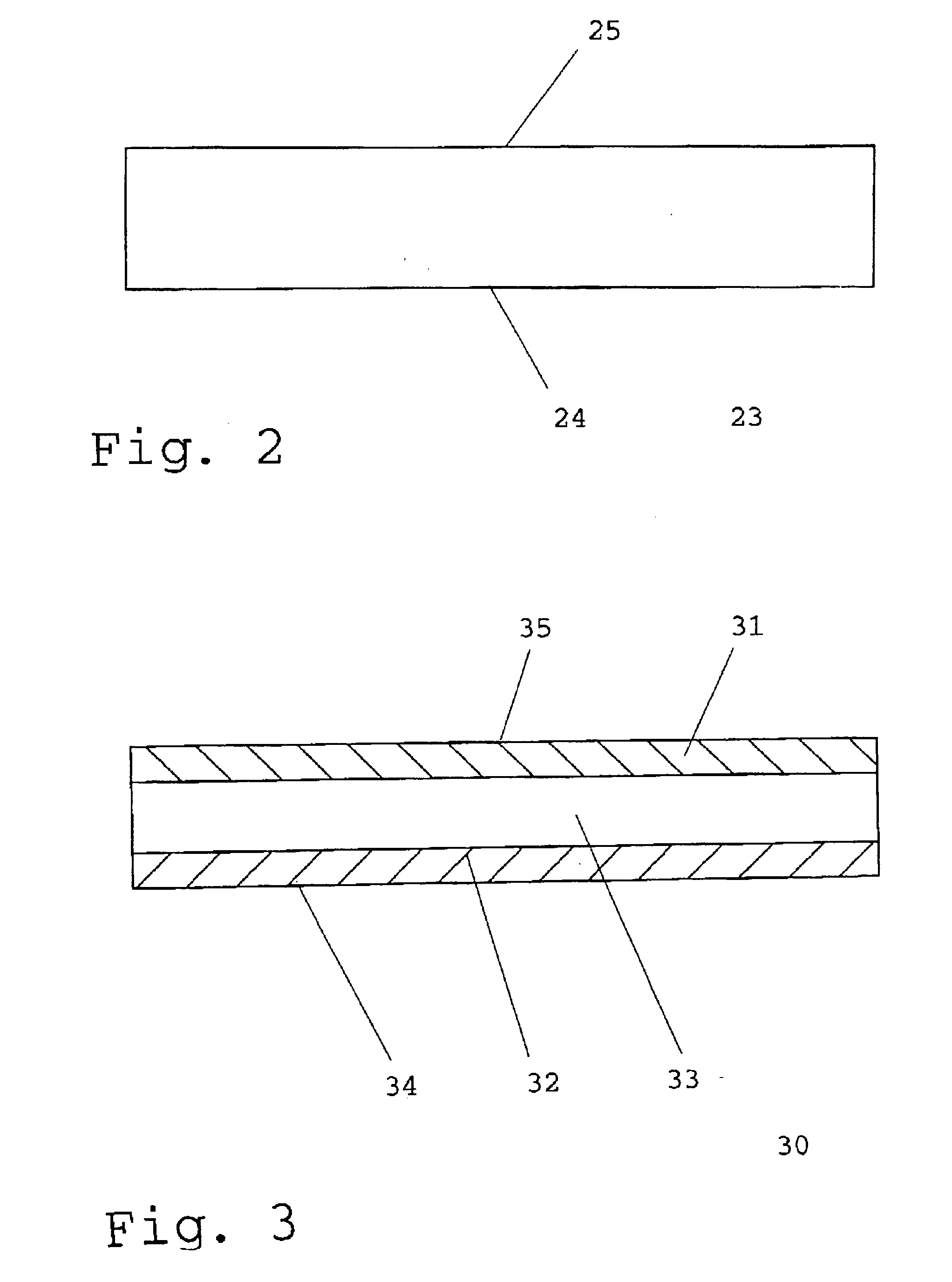Process for reducing surface aberrations
- Summary
- Abstract
- Description
- Claims
- Application Information
AI Technical Summary
Benefits of technology
Problems solved by technology
Method used
Image
Examples
example 1
[0074] A three-layer blown polymer film was produced using DOWLEX™ 2045G octene copolymer linear low density polyethylene (LLDPE) (Dow Chemical Co., Midland Mich.). No processing aid was added to the polymer resin. The polymer resin was fed to the extruders at a total rate of 12 lb / hr / inch of die circumference (about 2.14 kg / hr / cm of die circumference). The extrusion temperature was 430° F. (about 221° C.) and the die gap was 0.055 inches (about 1.4 mm).
[0075] The resulting blown polymer film had severe surface melt fracture. Haze was not assessed due to the severe melt fracture.
example 2
[0076] A three-layer blown polymer film was produced using DOWLEX™ 2045G octene copolymer linear low density polyethylene (LLDPE) (Dow Chemical Co., Midland Mich.). 2% (w / w) processing aid was blended with the polymer resin prior to feeding the resin to the extruders for feed to the inner and outer layers. The polymer resin was fed to the extruders at a total rate of 12 lb / hr / inch of die circumference (about 2.14 kg / hr / cm of die circumference). The extrusion temperature was 430° F. (about 221° C.).
[0077] The resulting blown polymer film did not have visible surface melt fracture. Optical inspection of the polymer film revealed the presence of haze bands and surface haze.
example 3
[0078] A three-layer blown polymer film was produced using DOWLEX™ 2045G octene copolymer linear low density polyethylene (LLDPE) (Dow Chemical Co., Midland Mich.). No processing aid was added to the polymer resin. The polymer resin, however, was treated at 150° F. (about 66° C.) for 16 hours in a Una-Dyn Dehumidifying Hopper Dryer, Model DHD-30 (Universal Dynamics Corp., Woodbridge Va.). The resin was air cooled to room temperature following heat treatment. Polymer resin was fed to the extruders at a total rate of 12 lb / hr / inch of die circumference (about 2.14 kg / hr / cm of die circumference). Treated polymer resin was only supplied to the surface layers; untreated polymer resin was supplied to the core layer. The extrusion temperature was 400° F. (about 204° C.).
[0079] The resulting blown polymer film did not have visible surface melt fracture, haze bands or surface haze.
PUM
| Property | Measurement | Unit |
|---|---|---|
| Temperature | aaaaa | aaaaa |
| Temperature | aaaaa | aaaaa |
| Temperature | aaaaa | aaaaa |
Abstract
Description
Claims
Application Information
 Login to View More
Login to View More - R&D
- Intellectual Property
- Life Sciences
- Materials
- Tech Scout
- Unparalleled Data Quality
- Higher Quality Content
- 60% Fewer Hallucinations
Browse by: Latest US Patents, China's latest patents, Technical Efficacy Thesaurus, Application Domain, Technology Topic, Popular Technical Reports.
© 2025 PatSnap. All rights reserved.Legal|Privacy policy|Modern Slavery Act Transparency Statement|Sitemap|About US| Contact US: help@patsnap.com



